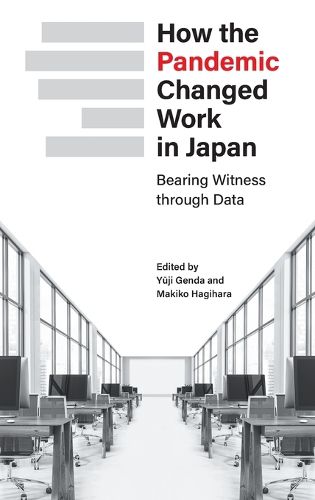Readings Newsletter
Become a Readings Member to make your shopping experience even easier.
Sign in or sign up for free!
You’re not far away from qualifying for FREE standard shipping within Australia
You’ve qualified for FREE standard shipping within Australia
The cart is loading…






This title is printed to order. This book may have been self-published. If so, we cannot guarantee the quality of the content. In the main most books will have gone through the editing process however some may not. We therefore suggest that you be aware of this before ordering this book. If in doubt check either the author or publisher’s details as we are unable to accept any returns unless they are faulty. Please contact us if you have any questions.
The COVID-19 pandemic swept the globe from 2019 had a major impact on the way people lived and worked. People refrained from going out and, inevitably, the way people worked underwent drastic changes.
What kind of working environment enabled people to best adapt to the emergency?
Did the pandemic impact urban and rural areas differently?
How did the pandemic affect workers with children?
This book adopts a thoroughly data-driven approach, relying primarily on data from the Japanese Panel Survey of Employment Dynamics by the Recruit Works Institute. The JPSED has been tracking a sample of 50,000 people since 2016, and is thus one of largest of the very few surveys in Japan that has tracked the same individuals since before the pandemic.
Eleven scholars and researchers examined the pandemic's impact on working styles and analyzed the data from various perspectives to identify changes in the labor market in Japan, including telework, work-childcare relations, and disparities in employment status, which makes the book a valuable historical testimony of a distinct turning point in Japan's work culture.
$9.00 standard shipping within Australia
FREE standard shipping within Australia for orders over $100.00
Express & International shipping calculated at checkout
This title is printed to order. This book may have been self-published. If so, we cannot guarantee the quality of the content. In the main most books will have gone through the editing process however some may not. We therefore suggest that you be aware of this before ordering this book. If in doubt check either the author or publisher’s details as we are unable to accept any returns unless they are faulty. Please contact us if you have any questions.
The COVID-19 pandemic swept the globe from 2019 had a major impact on the way people lived and worked. People refrained from going out and, inevitably, the way people worked underwent drastic changes.
What kind of working environment enabled people to best adapt to the emergency?
Did the pandemic impact urban and rural areas differently?
How did the pandemic affect workers with children?
This book adopts a thoroughly data-driven approach, relying primarily on data from the Japanese Panel Survey of Employment Dynamics by the Recruit Works Institute. The JPSED has been tracking a sample of 50,000 people since 2016, and is thus one of largest of the very few surveys in Japan that has tracked the same individuals since before the pandemic.
Eleven scholars and researchers examined the pandemic's impact on working styles and analyzed the data from various perspectives to identify changes in the labor market in Japan, including telework, work-childcare relations, and disparities in employment status, which makes the book a valuable historical testimony of a distinct turning point in Japan's work culture.